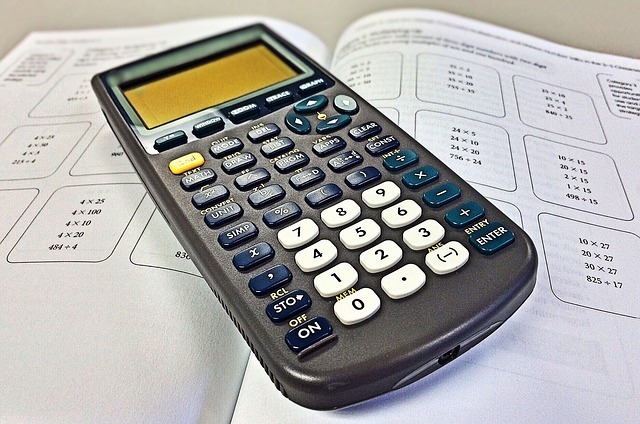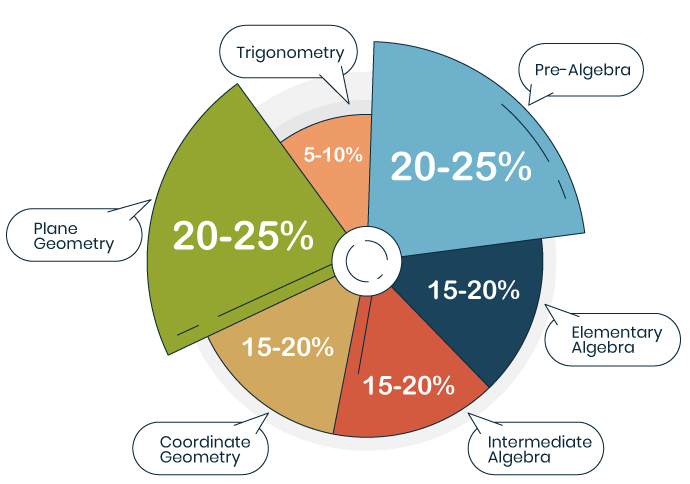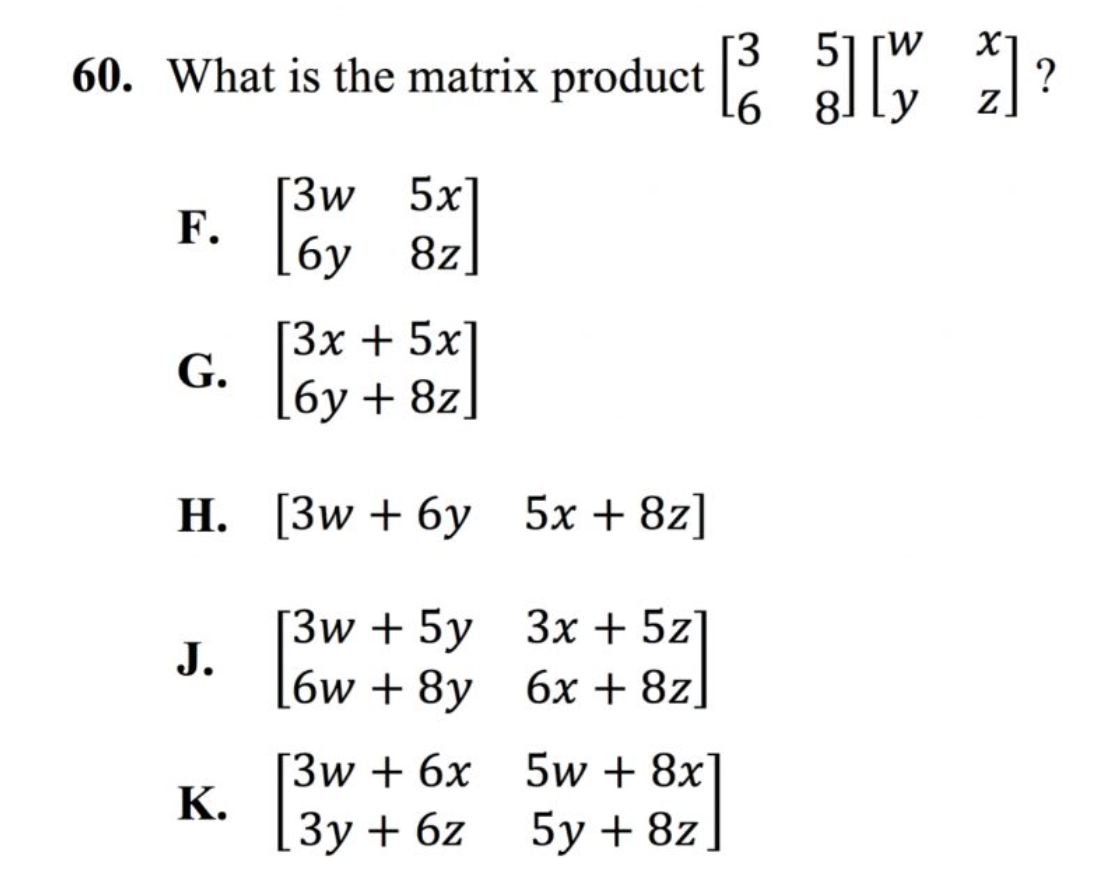
The ACT math section is one of the easiest sections to prepare for and to score well in the ACT test. In fact, with the right preparation and test-taking strategy, getting a perfect 36 in ACT Math is also quite possible. ACT Math is the section in which practice and an on-the-feet intelligent guessing strategy are the most rewarding. Let’s first understand the ACT Math format to assess what this section really tests you for.
The ACT Math Section – A Quick Overview
The ACT Math section is the second section on the ACT test and has 60 questions with a time limit of 60 minutes. The questions are divided into three categories:
- Preparing for Higher Math (35 questions) – within this category, the approximate split by topics is as follows:
- Numbers and Quantities (5 questions)
- Algebra (8 questions)
- Functions (8 questions)
- Geometry (8 questions)
- Statistics & Probability (6 questions)
- Integrating Essential Skills (25 questions)
- Modeling (22 questions) – questions are drawn from the above two categories
You will receive a total of 8 reporting category scores for the math section and the total section score in the range of 1-36. This section of the ACT evaluates math skills typically studied through the beginning of grade 12 and a whopping 50-60% of the questions in this section test only the basic concepts of math! There is also NO NEGATIVE marking for a wrong answer on the ACT test – so yes, you must put an answer choice even if it’s only a random guess for ALL questions.

How you approach the ACT Math section on the test day is equally as important as the right preparation beforehand. From the art of informed guessing to time management, all of it can take your regular score in this section up by 1-5 points.
Now, are you already, raring to score high on the ACT Math? Let’s get started, right away with our top 5 tips & strategies for the test-taking day:
1. Backsolve – crack questions by substitution
A lot of ACT Math questions can be solved by using the method of direct substitution. You can either use numbers of your own or the given answer choices and insert them back into the questions. This strategy can also backfire big time if not used correctly. This is what no article ever will tell you about either! While picking random numbers or answer choices to plug back into the original question, remember the following:
- Always read the question to identify any conditions you must put while choosing even random numbers. For example, whether 0 is allowed or not as an answer choice, whether the answer has to be a negative or a positive integer or an even or odd number, etc.
- A common mistake is to ‘always’ prefer backsolving over classical math. For example in the question below, you’d actually spend more time backsolving than using direct math. Always evaluate whether backsolving would have an unambiguous answer and a non-repetitive exercise for each answer choice.

2. Read math questions the right way and take notes
Change the way you consume problem statements in the ACT Math section. Instead of reading them as a whole in one go and revisiting to jot down facts and numbers, do this to save time and increase the likelihood of finding the correct answer:
Break down the problem statement into 3 different parts and jot down the following as you read it:
- Given: note down everything that is given already in the question
- Asked: state clearly what is it that you need to solve for
- Conditions: any special considerations, limits on values, units, etc.
For example, consider the following problem statement:
“Cube A has an edge length of 12 inches. Cube B has an edge length that is twice that of Cube A. What is the volume of Cube B in cubic feet?”
A. 24
B. 8
C. 13824
D. 1728
This is how we would suggest you approach it on the test day:
Given: side of Cube A = 12 inches
Side of Cube B = 12*2 = 24 inches
Asked: Volume of Cube B (side*side*side)
Conditions: Volume should be in cubic ‘feet’
Correct answer: Edge of Cube B = 1 foot (12 inches = 1 foot) which implies the edge of Cube B is 2 feet (twice of Cube A). The volume of Cube B hence would be 2*2*2 = 8 cubic feet. The correct answer is option B.
A common silly mistake would be to choose the answer stated in option C (by calculating edge of cube B as 12*2 = 24 inches and arriving at volume = 24*24*24 cubic inches). By noting down the condition that the answer is sought in cubic feet, you would simply save on making such a mistake!
Using the above format could translate to a very simple structure that can help you solve faster without missing out on any key information or condition:
3. Evaluate a question before attempting it and save time!
Always evaluate a question after a first glance and tag it mentally as – leave, attempt, or come back. If the question at the very first glance seems from a topic you feel is your weakest, simply guess and move to the next one. Tackle all the questions from your strong areas first and skip any question that takes you more than 2-3 minutes in the first round of attempting.
4. Learn the knack of avoiding silly mistakes
A great way to avoid silly mistakes is to break down the questions as described above in tip #2. However, addressing the core of silly mistakes is even more rewarding. Memorize all the common formulas, Pythagorean triplets, identities, squares, and square roots, etc. to avoid silly mistakes and save time. We love the ACT Math formula cheat sheets at Quizlet.com.

These flashcards will get you started in learning and remembering all ACT Math-relevant formulas. Take mini-tests just around these formulas to keep them in your functional memory for even longer.
Also read: How to Get Your ACT Test Prep Right – The Complete Guide
5. Use the right strategy to fill out the answer bubbles
A common strategy is to solve a question and fill out the corresponding answer bubble. This has some disadvantages – you hop between two tasks and lose the rhythm. Also, circling the wrong answer choice while hurrying for the next question is also a disaster for the overall score.
Instead, keep jotting down all your answer choices in one place as you navigate through and solve questions. During the last 15 mins, first, circle all the answer choices together and keep marking all the unattempted questions with a letter of your choice. This will help you save time and avoid the mistake of solving correctly but marking an answer wrongly.
A bonus tip on the use of calculators during the ACT test
The ACT test allows the use of calculators. While it is a great added bonus, here are a few things to keep in mind with respect to calculator usage:
- check here whether the calculator you are planning to use on the ACT test is permitted or not
- Make sure that your calculator is functional – arriving at the ACT test center with a dead calculator could be catastrophic!
- Get used to your calculator by using it during mock ACT tests, don’t buy a brand new make right before the exam. Stick to using a model you’re already accustomed to using
Lastly, while all of the above tips can help you ace the ACT math section, there is an even more sure shot method of cracking the section like a pro.
Prepare with a professional ACT Math tutor to ace the ACT Math section
An ACT Math tutor can not only help you uncover and overcome your weaker areas in Math but will also help you devise a personalized test-taking strategy. The tutor can not only help you prepare for the ACT Math but can also validate and test a strategy before you deploy it in the actual ACT test. At Talentnook, we have hundreds of qualified and experienced ACT tutors who are only a click away.
With a qualified tutor’s right guidance, discipline and feedback, you too can get a perfect 36 on the ACT Math – regardless of your current preparedness! Register, join the community, request free demo lessons, and get started on your ACT prep journey with a professional ACT tutor right away!
Also read: 6 Tips to Get a Perfect 36 on the ACT English Exam